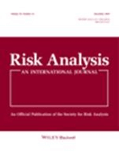
RISK ANALYSIS
Scope & Guideline
Elevating Standards in Risk Analysis and Management
Introduction
Aims and Scopes
- Microbial Risk Assessment:
A core focus on assessing the risks posed by microbial pathogens in food, water, and environmental contexts, employing quantitative models to evaluate public health implications. - Environmental and Health Risks:
Investigating risks linked to environmental factors and their impact on human health, including the assessment of water quality and the transmission of zoonotic diseases. - Food Safety and Security:
Analyzing risks associated with food production and consumption, including the effectiveness of interventions and control measures to mitigate foodborne illnesses. - Statistical and Predictive Modeling:
Utilizing advanced statistical techniques and predictive modeling to forecast the behavior of pathogens and assess risk factors in various scenarios. - One Health Approach:
Adopting a multidisciplinary approach that recognizes the interconnectedness of human, animal, and environmental health in risk assessments.
Trending and Emerging
- Impact of Climate Change on Risk:
Increasing focus on how climate change affects microbial risks and food safety, highlighting the need for adaptive strategies in risk assessment. - Use of Machine Learning and AI:
A growing trend towards employing machine learning and artificial intelligence in risk assessment methodologies, enhancing the predictive capabilities of models and improving data analysis. - Interdisciplinary Approaches:
Emerging themes are emphasizing interdisciplinary collaborations that integrate insights from microbiology, epidemiology, environmental science, and public health to create more holistic risk assessments. - SARS-CoV-2 and Viral Pathogen Studies:
A significant increase in research related to viral pathogens, particularly SARS-CoV-2, reflecting the ongoing global health crisis and the need for effective risk management strategies. - Food Safety Innovations:
Emerging focus on innovative food safety measures, including the use of biosensors and advanced imaging techniques for real-time risk assessment in food processing and handling.
Declining or Waning
- Traditional Pathogen Studies:
While studies on specific pathogens continue, there is a noticeable decline in traditional, isolated studies focusing solely on individual pathogens without considering broader ecological or health contexts. - Non-Quantitative Risk Assessments:
There appears to be a waning interest in purely qualitative risk assessments, as the trend shifts towards more quantitative and data-driven approaches that provide clearer, actionable insights. - Localized Risk Assessments:
Research that focuses narrowly on localized risk assessments without integrating broader epidemiological data or regional trends is becoming less common, as there is a greater push for global perspectives.
Similar Journals
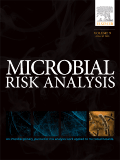
Microbial Risk Analysis
Exploring the Nexus of Epidemiology and MicrobiologyMicrobial Risk Analysis, published by Elsevier, is a pivotal academic journal specializing in the intersection of epidemiology, infectious diseases, and medical microbiology. With an ISSN of 2352-3522 and an E-ISSN of 2352-3530, this journal has been contributing to the field since its inception in 2016 and continues to invite groundbreaking research as it converges through 2024. With a respectable impact factor, Microbial Risk Analysis holds a Q3 designation in key categories, showcasing its credibility with ranks such as #48 in Epidemiology and #124 in Infectious Diseases according to Scopus. The journal serves as an essential platform for researchers, professionals, and students alike, aiming to enhance understanding of microbial risks and their public health implications. Although it operates under a subscription model, its contents remain accessible to a broad range of interdisciplinary scholars dedicated to advancing microbial research. For those at the forefront of epidemiological and infectious disease studies, Microbial Risk Analysis represents a crucial resource for disseminating knowledge and fostering collaboration.

JOURNAL OF FOOD PROTECTION
Driving excellence in food protection science.JOURNAL OF FOOD PROTECTION is a prominent academic journal published by Elsevier, dedicated to the field of Food Science and Microbiology. With an ISSN of 0362-028X and an E-ISSN of 1944-9097, it serves as a vital resource for researchers, professionals, and students interested in the microbiological aspects of food safety and quality. Since its inception, the journal has evolved significantly, with coverage spanning from 1977 to the present, reflecting its long-standing commitment to advancing knowledge in this critical area. Recognized for its rigorous peer-reviewed research, the journal boasts a commendable impact factor and ranks in the second quartile in Food Science and the third quartile in Microbiology according to 2023 assessments. Its Scopus ranking also highlights its relevance, with significant placements in both Agricultural and Biological Sciences and Immunology and Microbiology. The JOURNAL OF FOOD PROTECTION is an essential platform for disseminating pioneering studies that address contemporary challenges facing the food industry and public health, making it an indispensable resource in the quest for food safety and innovation.

Proceedings of the Institution of Mechanical Engineers Part O-Journal of Risk and Reliability
Transforming Knowledge into Practice for a Safer Tomorrow.Proceedings of the Institution of Mechanical Engineers Part O – Journal of Risk and Reliability is a highly regarded journal published by SAGE Publications Ltd, specializing in the critical fields of Safety, Risk, Reliability, and Quality. Established in 2006 and extending its coverage until 2024, this journal serves as a vital platform for researchers and professionals to disseminate innovative findings and discuss emerging trends and methodologies related to risk assessment and reliability engineering. With an impact factor that places it in the Q2 quartile of its category and ranked 69th out of 207 in Scopus, it has garnered significant attention within the academic community, ensuring robust visibility and influence. Readers can expect rigorous peer-reviewed articles that contribute to advancing knowledge and practices in the field, fostering a deeper understanding of the complexities and integral practices essential for safety and reliability. As a leading publication within the United Kingdom, it continues to play an instrumental role in shaping contemporary discussions and research in this vital sector.

Microbiology Research
Fostering Collaboration in Microbial InnovationMicrobiology Research, published by MDPI, stands as a pivotal open-access journal in the field of microbiology, having established its presence since 2010. Based in Switzerland, this journal strives to provide a platform for innovative research and cutting-edge findings in various branches of microbiology, including medical microbiology and molecular biology. With an impact factor that reflects its dedication to scholarly excellence, Microbiology Research is classified in the Q3 category for both microbiology and medical microbiology, and Q4 for molecular biology as of 2023, indicating its growing importance and outreach within these domains. The journal aims to foster discussion and collaboration among researchers, professionals, and students by presenting articles that cover a wide array of topics and methodologies in microbiological research. Leveraging its open-access model, Microbiology Research ensures that high-quality research is accessible to a global audience, thus facilitating the advancement of knowledge and innovation in the microbial sciences.
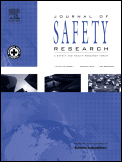
JOURNAL OF SAFETY RESEARCH
Championing excellence in safety research since 1969.The JOURNAL OF SAFETY RESEARCH, published by Pergamon-Elsevier Science Ltd, stands as a premier platform for scholarly discourse within the domain of safety, risk, reliability, and quality. With an esteemed impact factor and a strong ranking of #38 out of 207 in its category as per Scopus, this journal maintains a distinguished Q1 quartile status, reflecting its influence and significance in advancing safety research since its inception in 1969. Researchers, practitioners, and students alike will find a wealth of knowledge here as the journal explores critical aspects of safety in various contexts, highlighting innovative strategies and empirical findings that contribute to improved safety outcomes globally. Though it operates under a traditional access format, the journal’s extensive repository of articles ensures that vital information remains accessible to its readership. The JOURNAL OF SAFETY RESEARCH is not only a cornerstone for those within the safety engineering field, but also a vital resource for professionals seeking to enhance their understanding of risk management and quality assurance methodologies.
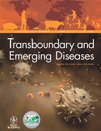
Transboundary and Emerging Diseases
Advancing global health through innovative research.Welcome to Transboundary and Emerging Diseases, a prestigious journal published by WILEY-HINDAWI. With its ISSN of 1865-1674 and E-ISSN of 1865-1682, this journal plays a pivotal role in the dissemination of high-quality research within the fields of Immunology, Microbiology, Medicine, and Veterinary Sciences. Based in the United Kingdom, this open-access journal stands out with a remarkable impact factor, reflecting its category quartiles in 2023, where it secured Q1 rankings across multiple disciplines, including a remarkable rank of #3 out of 194 in Veterinary General, placing it in the top 2% of its field. With coverage spanning from 2008 to 2024, Transboundary and Emerging Diseases provides a vital platform for researchers, professionals, and students to explore emerging threats to global health and animal welfare. The journal's commitment to open access ensures broad availability of cutting-edge research, fostering collaboration and knowledge sharing in pursuit of innovative solutions to transboundary diseases. Join a community dedicated to advancing the science and practice within this crucial area of study.
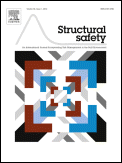
STRUCTURAL SAFETY
Championing quality and reliability in engineering.STRUCTURAL SAFETY is a premier journal dedicated to advancing the field of engineering with a focus on safety, risk, reliability, and quality in structural analysis and design. Published by Elsevier, this esteemed journal boasts an impressive Impact Factor and ranks in the top quartiles (Q1) of key categories including Building and Construction, Civil and Structural Engineering, and Safety, Risk, Reliability, and Quality. With a significant history spanning from 1982 to 2024, STRUCTURAL SAFETY fosters scholarly exchange among researchers, professionals, and students by publishing innovative and high-quality research articles that contribute to the safety and resilience of engineered structures. The journal operates without open access barriers, ensuring a broad audience can access invaluable insights in the engineering realm. Its distinguished Scopus rankings further underscore its impactful role within the academic community, making it an essential resource for anyone invested in the discipline of structural safety.

EFSA Journal
Fostering innovation in animal and food sciences.EFSA Journal, published by Wiley, stands as a premier open-access platform dedicated to the fields of animal science, food science, and veterinary studies, among others. Since its inception in 2003, this journal has contributed significantly to the dissemination of high-quality research, fostering collaboration and innovation across various disciplines. With an impressive impact highlighted by its Q1 quartile rankings in multiple categories including Animal Science, Food Science, and Parasitology, the journal upholds rigorous standards and a commitment to advancing knowledge. Researchers and professionals benefit from the wide-ranging scope and high visibility of published works, thereby enhancing their scholarly impact. For academics seeking excellence in open-access publishing, EFSA Journal represents a vital resource from the United Kingdom, ensuring that critical insights into food safety, biotechnology, and environmental sciences reach a global audience.
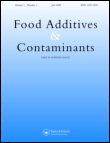
Food Additives & Contaminants Part B-Surveillance
Exploring critical insights on additives and contaminants.Food Additives & Contaminants Part B-Surveillance, published by Taylor & Francis Ltd, is a premier journal dedicated to the rigorous analysis and surveillance of food additives and contaminants. With an ISSN of 1939-3210 and an E-ISSN of 1939-3229, this journal caters to a global audience, addressing crucial issues in the fields of Food Science, Public Health, and Toxicology. Recognized for its substantial contribution to these areas, it holds a Q2 ranking in both Food Science and Public Health, demonstrating its influence and relevance with an increasing audience within the scientific community. The journal publishes critical research from 2008 onwards and continues its commitment to advancing knowledge up to 2024. Ideal for researchers, practitioners, and students, Food Additives & Contaminants Part B-Surveillance serves as a vital platform for sharing innovative findings and fostering discussions that promote food safety and public health.
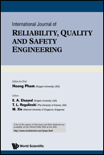
International Journal of Reliability Quality and Safety Engineering
Championing Reliability and Safety in Engineering DisciplinesThe International Journal of Reliability Quality and Safety Engineering, published by World Scientific Publishing Co Pte Ltd, is a leading platform for disseminating cutting-edge research in the fields of reliability, quality, and safety engineering. With an impressive scope that spans across aerospace, electrical engineering, nuclear energy, and industrial manufacturing, this journal serves as a critical resource for researchers and professionals aiming to enhance system dependability and operational excellence. Indexed in Scopus, it holds a respectable Q3 ranking across various categories in 2023, reflecting its growing influence in the academic community. Although currently not open access, it provides ample opportunities for scholars to publish impactful studies from its extensive database, which has evolved since 1996. The journal's commitment to advancing knowledge in reliability and safety engineering makes it a pivotal resource for those dedicated to improving engineering practices and protocols worldwide.